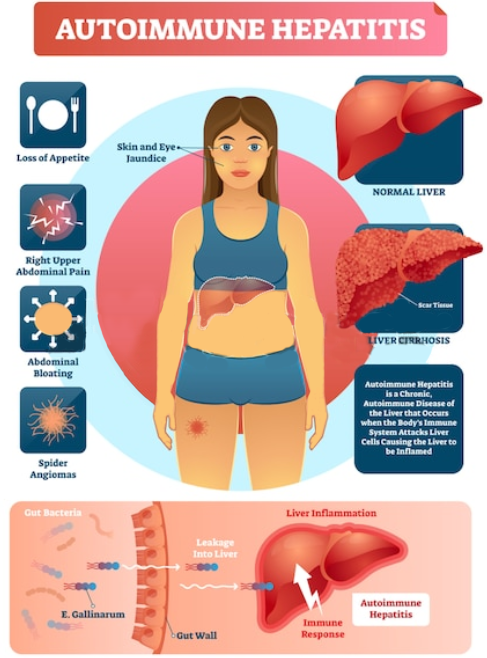
Autoimmune hepatitis is a combination of genetic susceptibility and environmental factors, leading to the breakdown of autoimmune tolerance, thereby causing the autoimmune response against liver cells and leading to liver cell damage. The onset of autoimmune hepatitis is slow, and the mild cases are asymptomatic, and symptoms such as fatigue, abdominal distension, lack of appetite, itching, jaundice, splenomegaly, and spider nevus appear during the activity of the disease. The disease is clinically characterized by varying degrees of elevated serum transaminase, hyper γ-globulinemia, positive autoantibody, and histological features that are interfacial hepatitis dominated by lymphocyte and plasma cell infiltration. Severe cases can quickly progress to cirrhosis and liver failure. The treatment of autoimmune hepatitis is based on drug immunotherapy.
The diagnosis methods of autoimmune hepatitis mainly include the following:
Creative Biogene's products mainly use indirect immunofluorescence antibody detection kits to quantitatively detect ANA, AMA, ASMA, and AGPA in human serum. The products target diseases including autoimmune hepatitis, pernicious anemia, scleroderma and many other autoimmune diseases. Our products can play an important role in your related research and help you quickly get accurate, reliable and reproducible diagnosis results.
Creative Bioarray focuses on the field of diagnostic reagents for autoimmune hepatitis. We are committed to providing the best products to accelerate the realization of customers' research goals. You can choose us without hesitation.
Please contact us for more details.
Reference
| Cat# | Product Name | Product Type | Inquiry |
|---|---|---|---|
| C0486T | COMVI-III Kit (Mouse Kidney/Stomach/Liver Substrate) | Test kit | Inquiry |
| C0487T | COMVI-III kit (HEp-2/Rat Kidney/Stomach/Liver Substrate) | Test kit | Inquiry |
| C0488T | COMVI-III Kit (HEp-2/Rat Kidney/Stomach/Liver Substrate) | Test kit | Inquiry |
| C0489T | COMVI-III kit (Mouse Kidney/Stomach/Liver Substrate) | Test kit | Inquiry |
| C0490T | COMVI-III Kit (Mouse Kidney/Stomach/Liver Substrate) | Test kit | Inquiry |
| C0491T | COMVI-II Kit (HEp-2/Mouse Liver Kidney/Stomach Substrate) | Test kit | Inquiry |
| C0547T | ANCA Profile ELISA | Test kit | Inquiry |
| C0548T | ANCA Screen ELISA | Test kit | Inquiry |
| C0549T | ANCA-C (PR3) ELISA | Test kit | Inquiry |
| C0550T | ANCA-P (MPO) ELISA | Test kit | Inquiry |
| C0592T | COMVI-III Kit (HEp-2/Mouse Kidney/Stomach/Liver Substrate) | Test kit | Inquiry |
| C0595T | COMVI-II Kit (HEp-2/Mouse Kidney/Stomach Substrate) | Test kit | Inquiry |
| C0631T | Anti-LKM-1 ELISA | Test kit | Inquiry |
Copyright © 2025 Creative Biogene. All rights reserved.